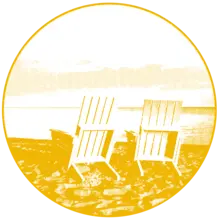Reporting The Vanishing, Invisible Forest project had two key challenges:
- Filming underwater research as it happened without the big budget of a Discovery Channel feature.
- Capturing the nuances of multidisciplinary climate and ecology research for our written piece.
On-location film production is expensive under ideal conditions and exponentially so underwater. During our initial budgeting and outreach with underwater video professionals, it became apparent that hiring even a single pro diver was going to break our limited budget.
In addition to the cost of the additional crew and gear, University of California, Santa Cruz policy prohibited non-university divers launching from the university-owned research vessels. That meant hiring an additional boat.
In the end, we went with what we know—drones.

As a nonprofit journalism organization, we depend on your support to fund our nationwide Connected Coastlines climate reporting. Donate any amount today to become a Pulitzer Center Champion and receive exclusive benefits!
We started exploring the possibility of using a submersible ROV to film the piece. For documentary crews, drones can be a cost-effective tool for cinematic shots that would previously have been impossible. We deploy a Mavic mini 2 or Air 2 on nearly every project. Ultimately, we selected the Qysea FiFish V6 based on the 4K camera, diving capabilities, and RAW file format.
We spent an afternoon practicing with the drone in a pool in Monterey, California, and were impressed with the speed and maneuverability. Ultimately, a professional camera operated by a diver would yield better footage—but for our application we were able to easily follow the researchers on their dives from the deck of their vessel, instead of coordinating from a second boat.
For the second challenge, we wanted to engage with the epistemology of climate and ecological research in a way that went beyond standard science reporting. To that end we used a framing device from writer Andy Robinson’s childhood in Monterey Bay, “Who counts the hairs on an otter’s head?”
Scientists, researchers, and academics are fantastic subjects because they are publicly listed, publish all of their material with sources, and are extremely passionate about their specialty.
At the same time, they can be wary—the language of scientists is often more nuanced than popular science reporting. To illustrate, we’d like to include an anecdote from Pete Raimondi about the pitfalls of science communication. This incident occurred when Raimondi was being interviewed about Sea Star Wasting Syndrome (SSWS) in 2013:
“It's one of the biggest mistakes I ever made in my life,” said Raimondi. “I was going to go on (the news) and the person asked me whether it was possible that the radioactivity from Fukushima … was causing Sea Star Wasting.” (Raimondi was referring to the 2011 nuclear meltdown in Fukushima, Japan.)
He told us he answered like a scientist: “I said: We can't rule that hypothesis out. We haven't tested it.”
After some internet sleuthing, we found the interview to which he was referring: an NBC Nightly News piece from November 20, 2013, in which Raimondi was quoted: “I've had probably 100 emails thus far saying, 'Well, what about Fukushima because of radiation?'” Raimondi said. "We haven't ruled that out yet, but we're clearly not ruling that in."
As non-committal as that statement sounds, Raimondi told us it only fueled concern and reporting that Fukushima could be linked to SSWS. “I got all these calls from people that were thinking, ‘My wife is pregnant. I live on the coastline. Should I move inland?’” He spent months trying to set the record straight once Fukushima was ruled out as a possible cause.
This is a fundamental challenge when reporting on ongoing research—scientists speak in hypothetical and experimental terms, headlines speak in absolutes. This is why it’s so important to understand the methods as much as the results of research and make them fundamental to the story, which we hope we have accomplished here.






